Klim X1 Alpha helmet review
Published on: 20 August 2025
CLICK KLIM X1 ALPHA HELMET TO SHOP WITH FREE UK NEXT DAY DELIVERY
You cannot talk about the Klim X1 Alpha without talking about the Krios Pro.
Now before the X1 came along earlier this year, the Krios Pro was Klim's adventure-helmet offering, but here's the thing. In our view it wasn't really an adventure helmet, certainly not in the way we understand an adventure helmet here in Europe, where very few adventure bike riders ever venture off the main highway. In our book, the Klim Krios Pro was a pretty serious, off-road helmet. And that's why we never really thought that it worked over here as an adventure helmet.
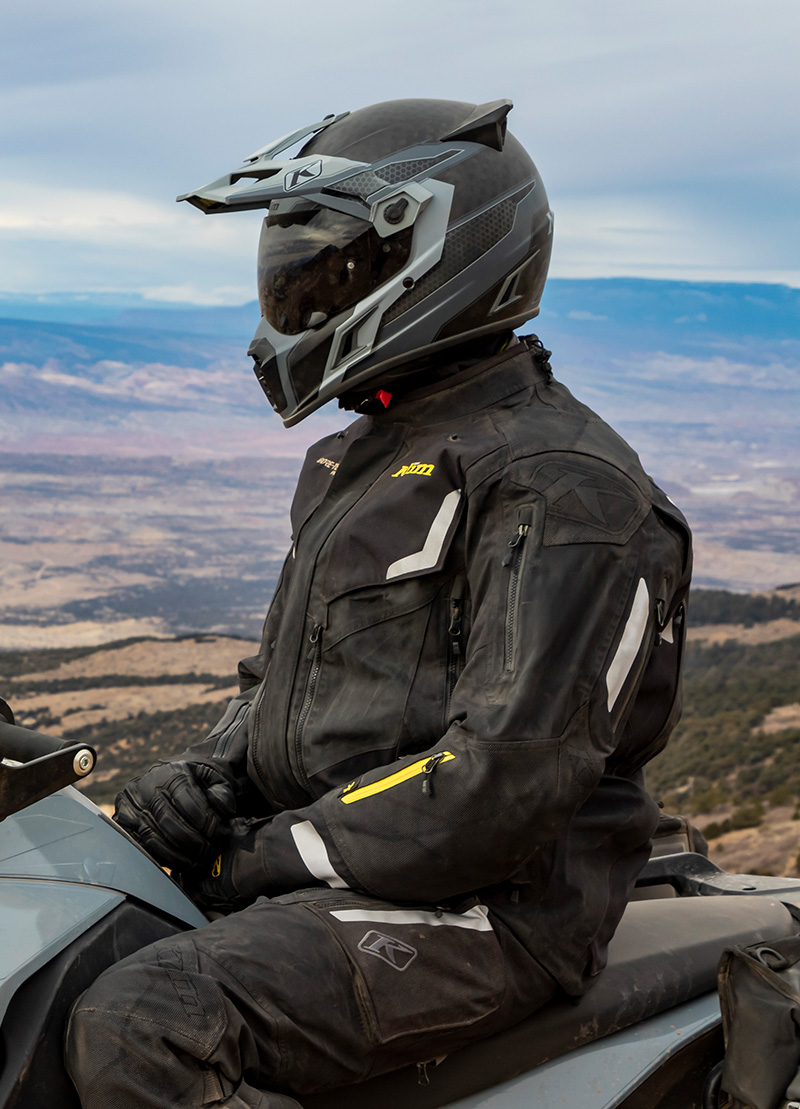
We got in to deep water with Klim over the views we expressed about the Krios Pro in one of our reviews, but in our opinion it just wasn't up to the role that many people expected it to fulfill. Klim makes some very special motorcycle gear; gear that is created to a specific brief; gear that they design in-house; gear that they construct using the best components; gear that is made to the highest standards.
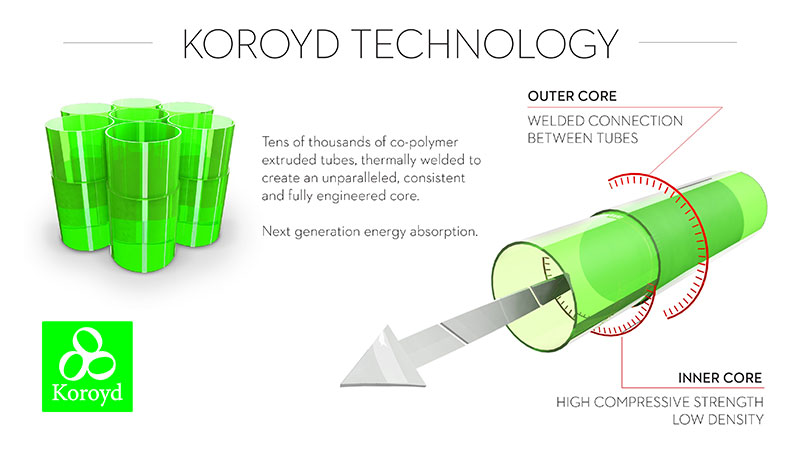
But for us the Krios Pro, whilst exceedingly trick, never hit the spot. The shell was a standard, off-the-shelf jobbie from UVEX. It came in two sizes only; never the mark of a premium helmet. The cheekpads felt as though they were filled with marshmallows. The seal of the visor against the shell was such that it wasn't great in the rain. And although Klim was the first helmet maker to truly commit to Koroyd as a replacement for the traditional eps liner, the result was a helmet that was noisier to ride in than a Bell Bullitt. Okay, I admit it, I’m exaggerating a little. Nothing is noisier than a Bell Bullitt, but you get my point!
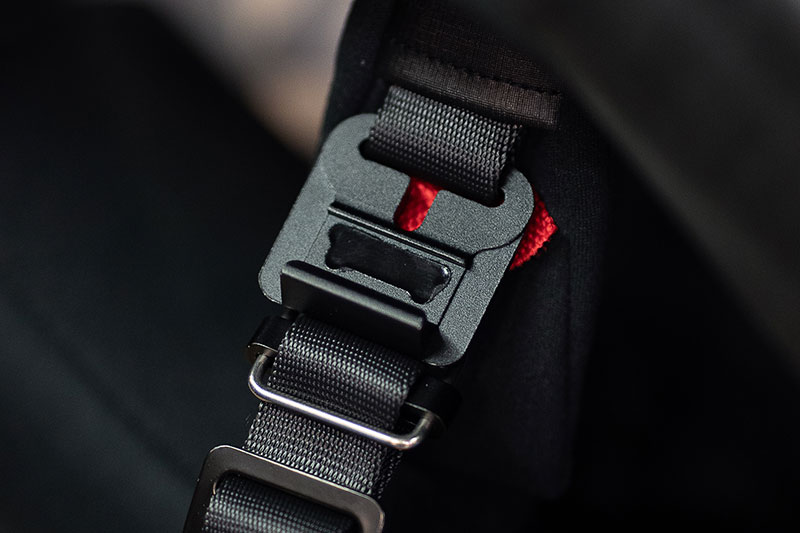
Of course, this didn't prevent a lot of people raving about the Krios, although I suspect that many were seduced more by its sexy features than by its wearability. And it cannot be denied that on paper the Krios Pro more than stacked up. Coming in at just 1350g., (in size Medium in a graphic), you had to tie it down to prevent it getting blown away by a passing gust of wind. You got a super-neat Fidlock fastener for the chin strap that blew most peoples' minds. And even though, as with many adventure helmets, you didn't get a drop-down, sun visor, you did get in the box a Photochromic visor that darkened in the light. Bear in mind that you'd pay over £200 for the same kind of thing for a Shoei helmet, and it made the Krios's hard-to-justify price, seem slightly more palatable.
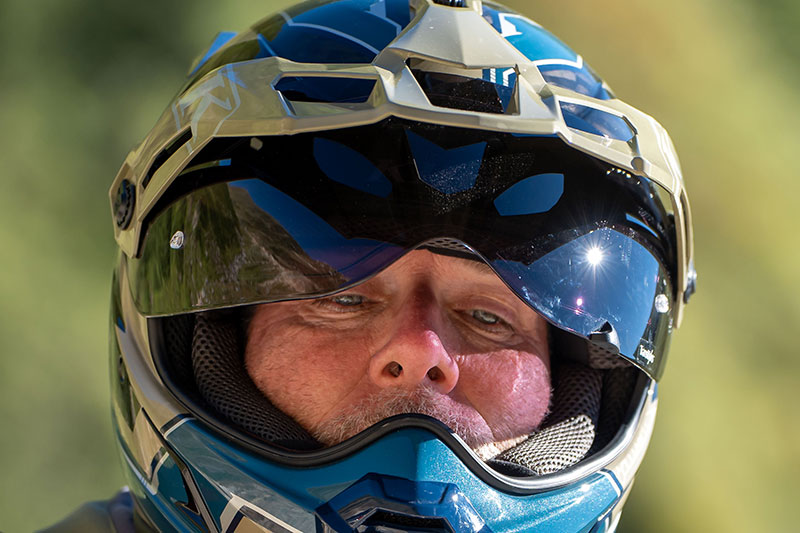
Truth be told, wisely or not, in the shop we would always try not to sell somebody the Krios Pro. Or perhaps more accurately we would always go to great lengths to manage their expectations. And that was because we wanted to make it less likely that somebody would bring the helmet back because it let the rain in, or because they found it excessively noisy.
Despite our best efforts, we still somewhat surprisingly sold quite a few. Some people love everything about Klim. And at times, as we know, love can be blind!
Now we have our fingers crossed that the new X1 is going to be more on point. And everything we can see, and everything we have been told by Klim, suggests that they have gone to huge lengths to try and make the X1 the ultimate 'adventure-touring' helmet. And importantly this is the first helmet that Klim has described a helmet as being designed for ‘adventure touring’. Now Klim is never going to acknowledge in a million years that the Krios Pro is not, or was not, a proper adventure helmet, but what is clear with the X1 is that Klim has designed a helmet to work as well on the road, and for touring, as it might do off it.

But here's the thing. I am going to tell you everything that we know about the helmet. I will be attempting to sort the wheat from the chaff; and that's important because Klim knows as well as anyone how to spin a bit of a yarn. If they brought out a new pen, they would need at least a thousand words and 20 bullet points to describe its properties. Most of those would be so full of jargon, however, that they'd be difficult to decipher. But we've been doing this long enough to believe that we can make a reasonable fist of cutting through any manufacturer’s rhetoric. I’m hoping, therefore, that we can do a reasonable job of imparting only the important stuff.
We have also become pretty good at 'deconstructing' products; pulling them apart and looking at their features in order to come to a view as to whether the item in question is going to do what the manufacturer says it will do.
But at the end of this process there will still be far more that is unknown than is known. Me taking the X1 for a long ride will prove absolutely nothing. That would only be meaningful if you were my height, with my head shape, riding my bike at the ridiculously slow speeds that I ride at, on the kind of roads that I ride on!
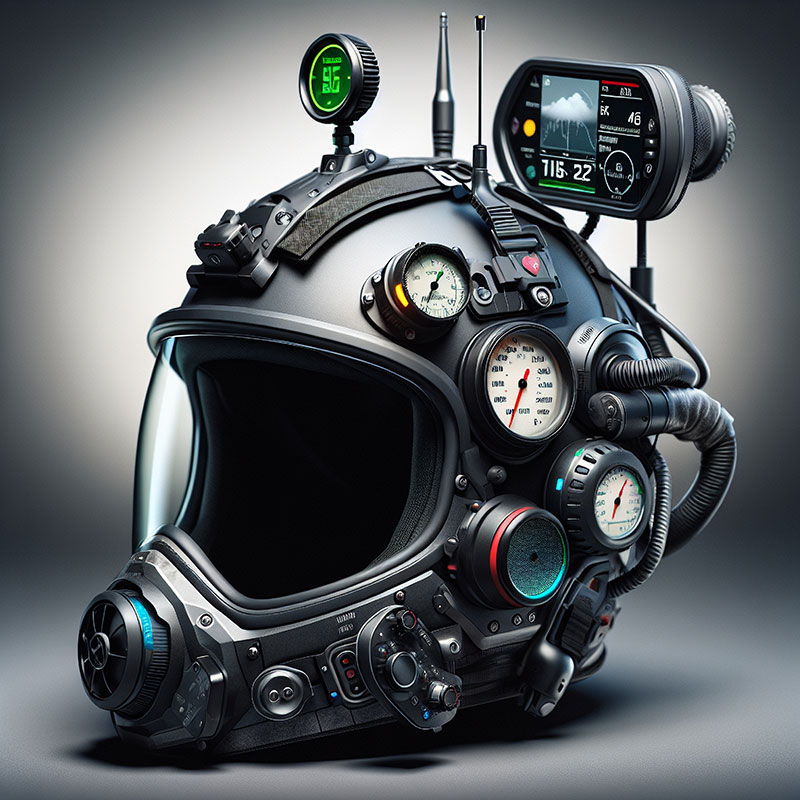
And don't be swayed by anybody who sticks a wind machine, a barometer, a temperature gauge, a noise tester and heart rate monitor onto the shell of the X1 Alpha, and ascribes values and scores to the helmet's performance. That's the kind of horseshit that even snake-oil salesmen of old would have been too embarassed to put out there. This numbers-led approach might work on Strictly Come Dancing, but for something like a motorcycle helmet, not so much.
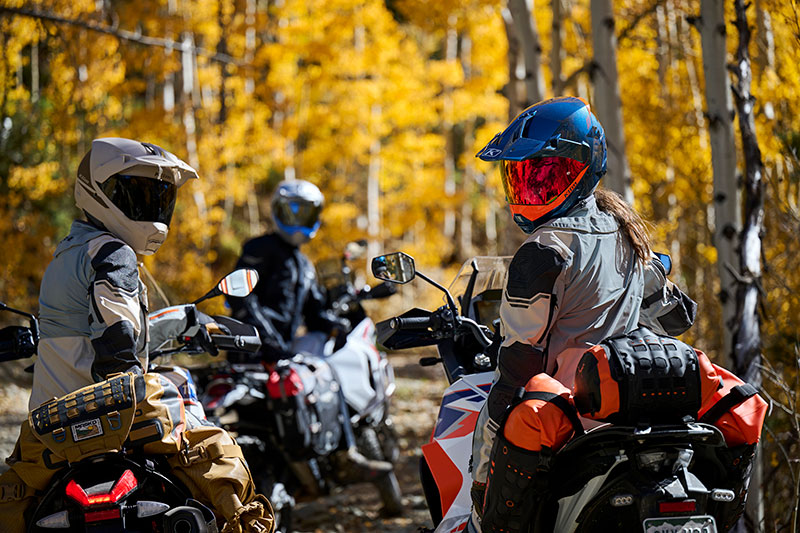
Now, I feel sure I will be repeating this counsel at the end of this review, but if after having read or listened to what I have to say about the X1, you decide to buy one, you need to bear in mind that, as with any brand new product, you are going to be acting as a test rider, helping Klim to perhaps refine the helmet in the future. If you buy one in 2025 you simply won't benefit from the feedback of thousands of riders who have gone before you. Klim tell us that they rode in the X1 for over 14,000 miles of testing before the helmet went in to production; and that's certainly better than Schuberth's zero miles before they put the C4 into production, but even 14,000 miles does not represent a huge amount of road time.
If therefore, having ridden in it, you find the X1 to be uncomfortable, too hot, too cold, too wet, too unstable or too noisy, that's on you. That's the price you have to pay be for being an early adopter; the first guy on the street to own own. If ever there was a case of 'caveat emptor', this is it.
Anyway, let's get into it.
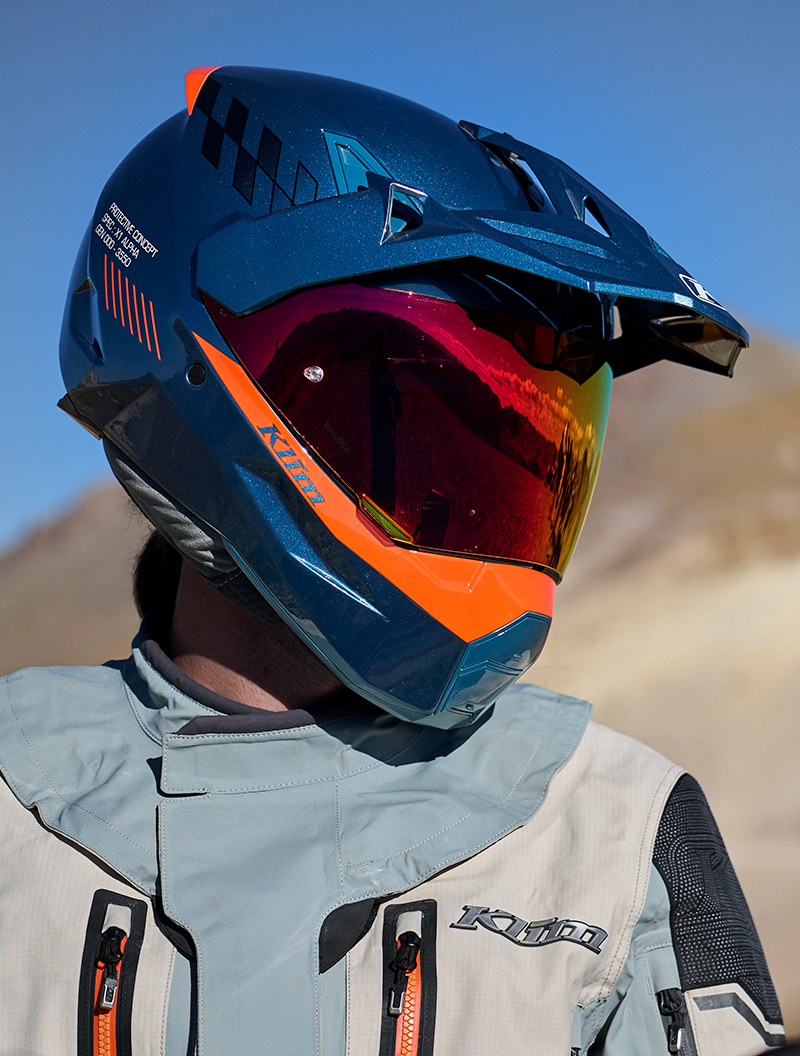
The X1 Alpha in detail
There are people, and amongst this group I might ordinarily count myself, who will by choice only put their trust in a helmet made by people who only make helmets.
But even that is no guarantee of quality, of course. There are plenty of brands out there who only make helmets but who, nonetheless, make some terrible ones. Yet in principle I agree. I wouldn't willingly wear a helmet from somebody whose main business is selling motorcycle luggage or neck braces. Likewise motorcycle jeans. Or leather jackets.
And that's because normally these brands will have met up with one of the Chinese manufacturers at somewhere like the EICMA show, where they will have done a deal to put their logo onto a white-label helmet, the quality of which cannot be vouched for. For these brands helmets are little more than an opportunity to generate an additional revenue stream. How the product itself performs is less important.
But whilst Klim is not a helmet manufacturer, and don't own a helmet factory, they have gone to quite unheard of lengths to be involved in the design, development, construction and testing of the X1.
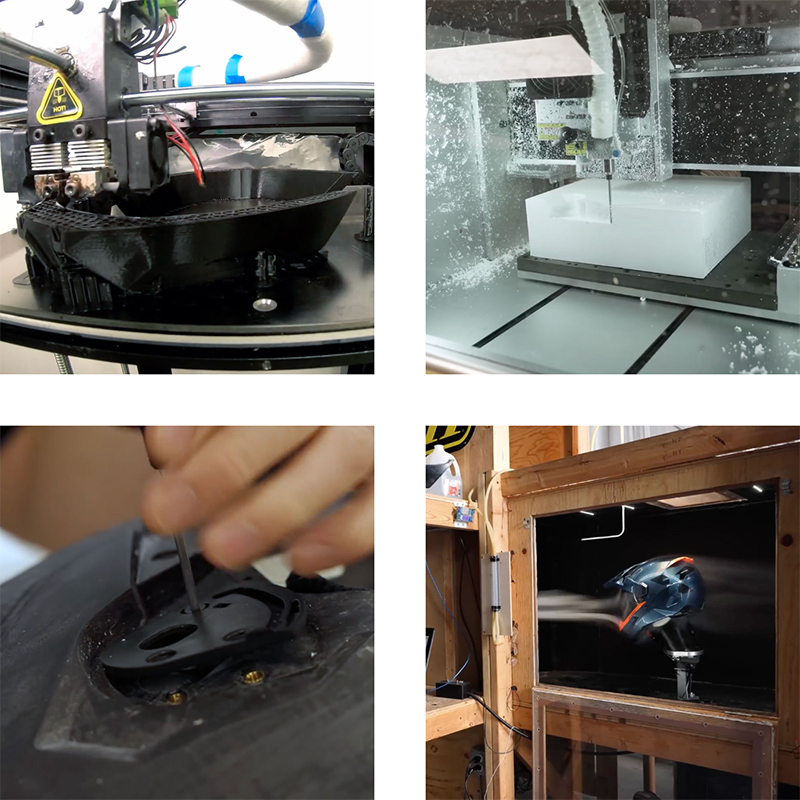
I remember visiting one particular French company's test laboratory many years ago. It was a cupboard-like room with two very unimpressive bits of equipment in it. By contrast, for the X1 Klim set up a facility in Idaho with 3-D printers, CNC machines and laser cutters to allow them to prototype every part of the helmet, so that they could test different aspects of the helmet's performance in their own in-house tunnel. That's impressive; as is the fact that it took the company some five years to bring this helmet to market.
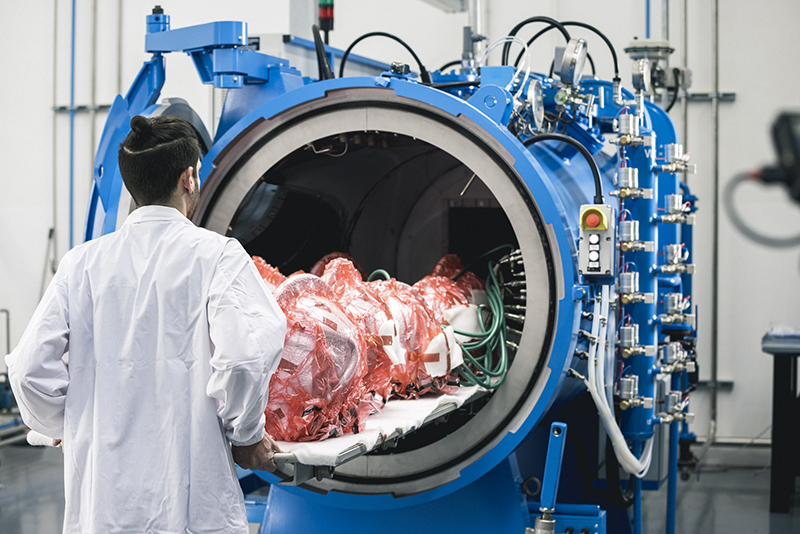
Now the shell for the X1 has been designed by Klim; they didn't buy it off the shelf in the way they did with the Krios Pro. The shell is all hand-laid carbon, and Klim talks about it being made with ‘pre-preg’ carbon fibres for the smoothest shell consistency, with the minimum amount of bubbles and imperfections. Now for sure there’s nothing particularly unique about this, and certainly the lengths that Schuberth goes to by having their carbon shells made by the same people who make their F1 helmets would suggest that there are other brands that probably make even more perfect carbon shells than the X1’s.
Bikers often obsess about the weight of helmets. We tend not to. I think the weight ends up being something that those who like to buy by numbers tend to latch on to, but for most of us who do most of our riding on the road marginal weight differences are not massively significant.

Recently, I got into a conversation with a guy who reckoned his helmet was superior to another helmet on the market because it weighed 40 grammes less. That was until I pointed out to him that 40 grammes was equivalent to two tablespoons of butter or 40 paperclips!
Yet given that the Krios Pro was so light, I feel a need to compare the two. And indeed, at 1500g. in Medium in a graphic treatment the X1 is 150 grammes heavier than the same spec. Krios Pro. Yet the X1 still couldn't be termed 'lardy', coming in at some 150g. less than the benchmark helmet in this sector: the Arai Tour-X5.
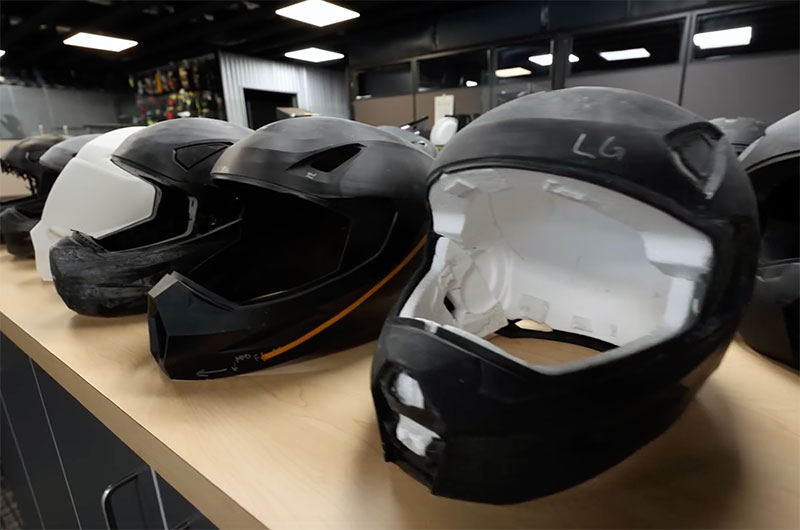
The X1 comes in three different shell sizes. And in theory that will make a huge difference when it comes to getting a good fit. As is usually the case with three shell sizes, Large gets its own shell. XS,S and M share the smaller shell. XL, XXL and XXXL share the larger one.
There are five different eps sizes with the X1, which is what one might hope for. The XS and S sizes share an eps, M has its own unique eps, as does L, as does XL. XXL and XXXL share an eps. And this is what one might expect in a Shoei helmet; so it can be concluded that Klim has made all the right plays to try and get the X1 to fit the largest number of people.
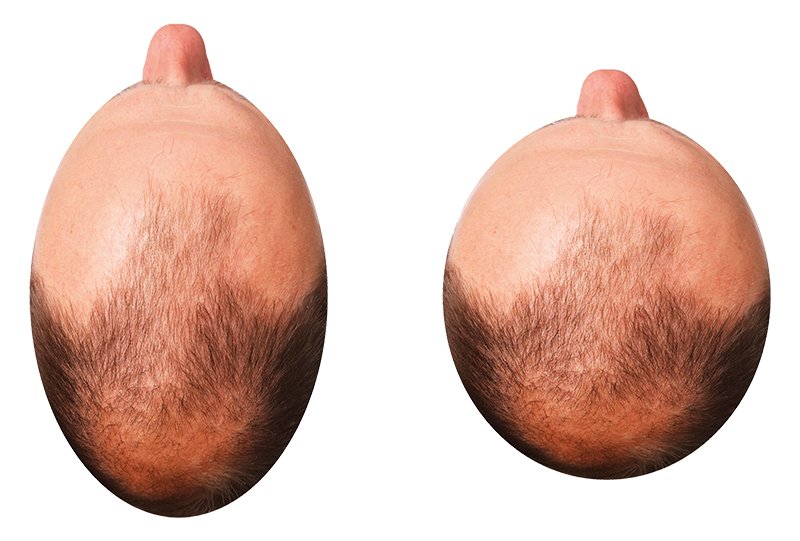
Klim talks about the shape of the helmet being ‘intermediate oval’. But that’s what everybody says about their helmets, because it sounds universal. But as a phrase it’s pretty meaningless, and only over time will we develop a view as to how it compares with, say, a Shoei, an Arai helmet or a Schuberth.
As with any helmet, you are going to have to try it on. And what you are in another Klim helmet will be irrelevant. If you want to get the X1 right, come and see us. Most dealers will say whatever they feel is required to get you to buy the helmet you want. We won’t. If we think the fit on you is marginal, we’ll tell you; and send you on your way if necessary!

One of the things that Klim seems particularly proud about on the X1 is the peak. Now spoil sports that we can sometimes be, we have often pilloried the near-manic desire that adventure bikers seem to have for a peaked helmet. And that's a bit unfair of us because we're all guilty of 'dressing up' for the bike now and again. Sportsbike riders, retro bike riders, the Harley crowd. Whatever you ride there's a look, a kind of code; and many bikers feel that they stand a better chance of being accepted if they adopt the right look.
But our serious point with regard to peaks is that, appropriate as they might look on certain bikes, a peak can be more trouble than it’s worth. They can cause buffeting as the oncoming air flows over the screen. They can oscillate at speed. They can generate added noise. And they can be particularly susceptible to cross winds.
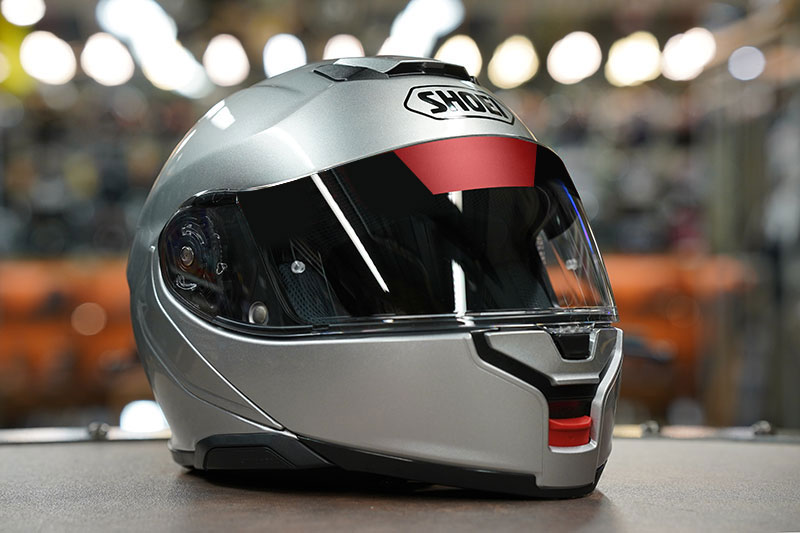
I accept obviously that a peak can help you block out the blinding effects of the low-lying sun, in the same way as a sun visor does in a car. But actually a small piece of tape about three inches by, say, an inch can often do the same, and with far fewer side effects.
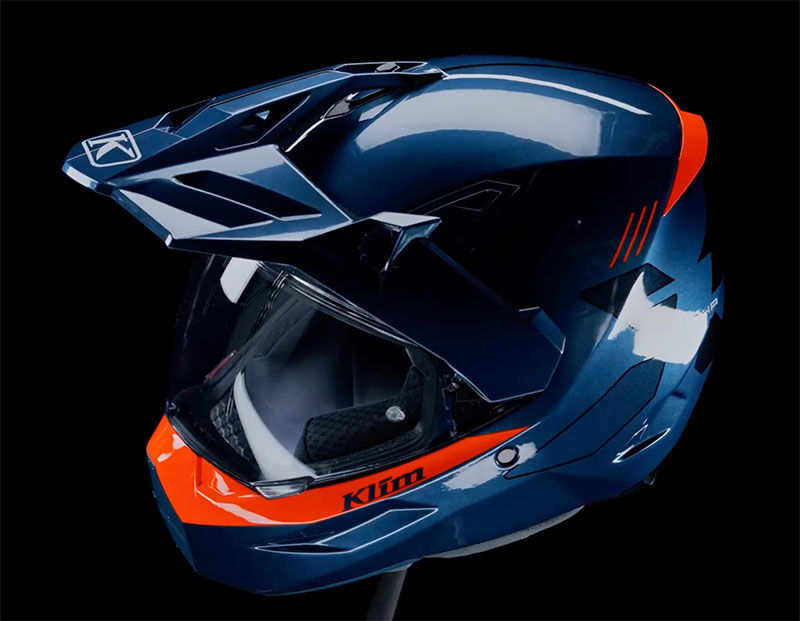
But Klim has apparently worked hard to get their peak to flow through the air with the minimum of disturbance. To this end the peak on the X1 is more solid and with less open areas than the peak on the Krios Pro. I don’t say that Klim has got it wrong, obviously, but I have to admit that this confuses me a little. It seems somewhat counter-intuitive, especially given that when faced with exactly the same problems when developing the Tour-X5, Arai developed a far more ‘open’ peak with much greater flexibility. We’ll just have to see if Klim has got it right.
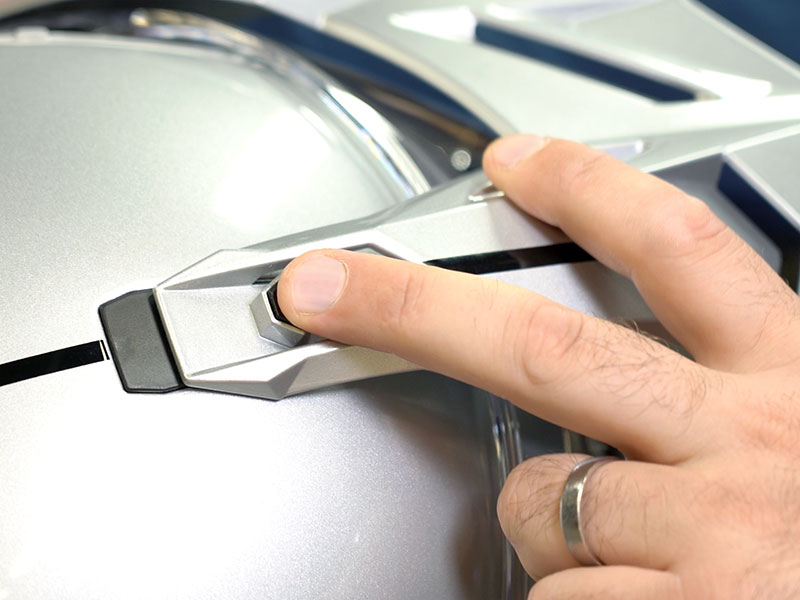
Now one of the advantages of the peak on the Klim is the ease with which it can be adjusted between three different positions, even when you’re on the move. There’s a very simple sliding mechanism that works really well. But there's another thing here; if moving the peak doesn't work for you, it can be taken off really simply, and without tools. Klim suggests that you could again do this on the fly, but I'm not sure they have properly run this by their Health & Safety people, so I wouldn't try it at home. Just one thing. If you do remove the peak there are blanking plates in the box to prevent turbulence around the recesses in the visor mechanism that can create extra noise. To the same end you also get a blanking plate for the peak’s slider mechanism.
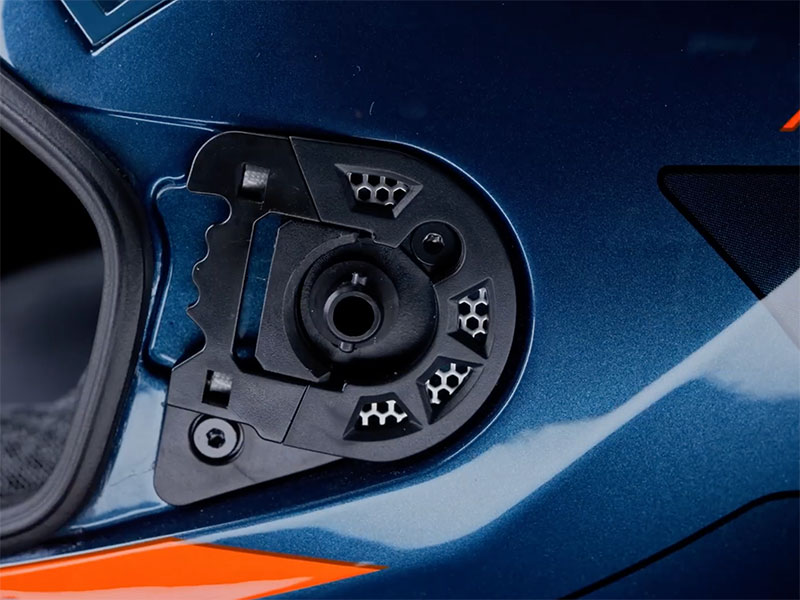
The other thing that is super-easy to remove is the main visor. It’s held in place by means of a spring-loaded mechanism. Pull the visor away from the helmet and it pops out. No tools are required; it couldn’t be easier. Klim reckons that this spring-loaded mechanism also means that the visor will never need adjusting. The mechanism should, in theory, also help to keep out both the rain and the noise-inducing wind.
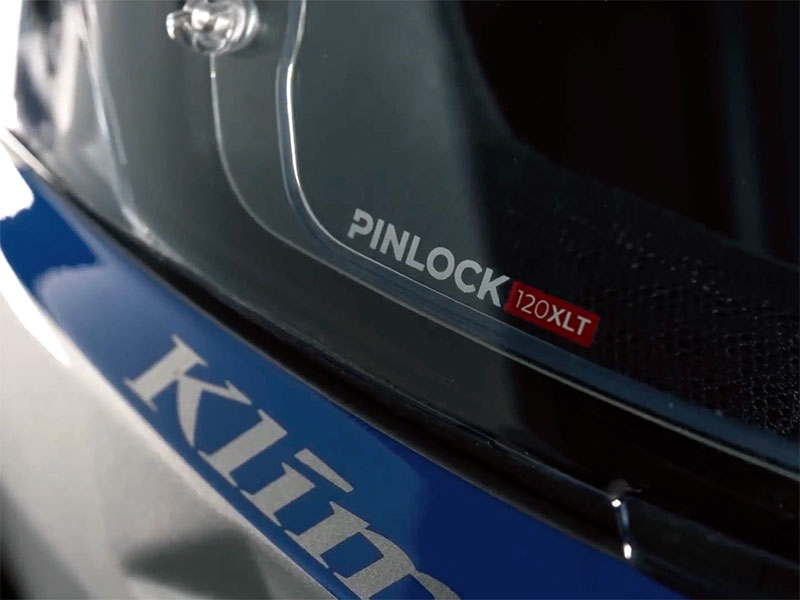
Klim tells us the visor is Class 1 optical quality. They also claim that the optical quality of their visor is not reduced by the top-of-the-range 120 Pinlock that comes in the box. And that may be true, but to be fair that's not a Klim thing; that's a Pinlock XLT (Extra Light Transfer) thing. The Pinlock, by the way, is a large one that covers almost the entire visor, meaning that it really should be pretty effective at combatting fogging issues.
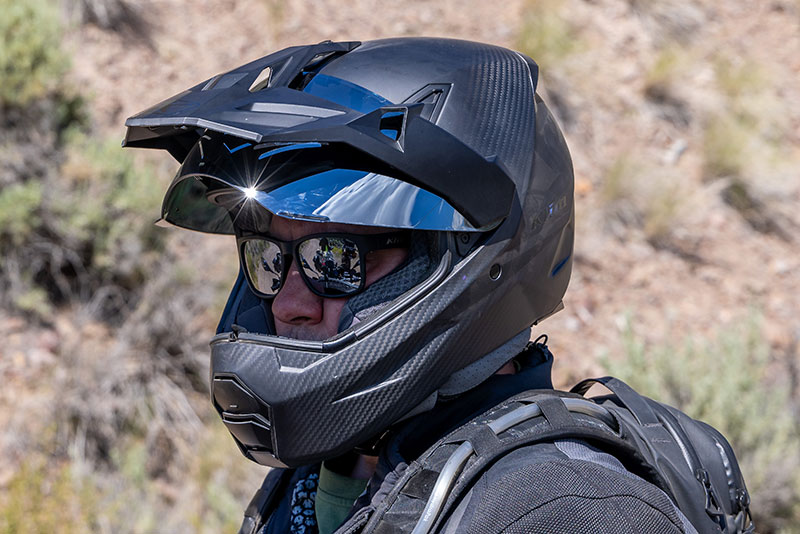
In the box, as with the Krios Pro you get a Photochromic visor that darkens in the light. Klim also tells us that this, and their other tinted visors, come with a coating to prevent the sun’s infrared heat being transmitted on to the face. You don’t get this with the clear visor.
In addition to the spring-loaded mechanism that should ensure a better seal between the visor and the shell, there’s more sophisticated, softer, rubber seal around the edge of the visor. The Krios had a PVC one, but the X1 has a rubber seal of what they term ‘automotive’ quality. Again all this should help keep the wet stuff out. Now no helmet is ever going to be totally watertight, but if you ever had a Krios Pro I am hoping that you will be impressed by the X1, although that's not setting the bar particularly high!
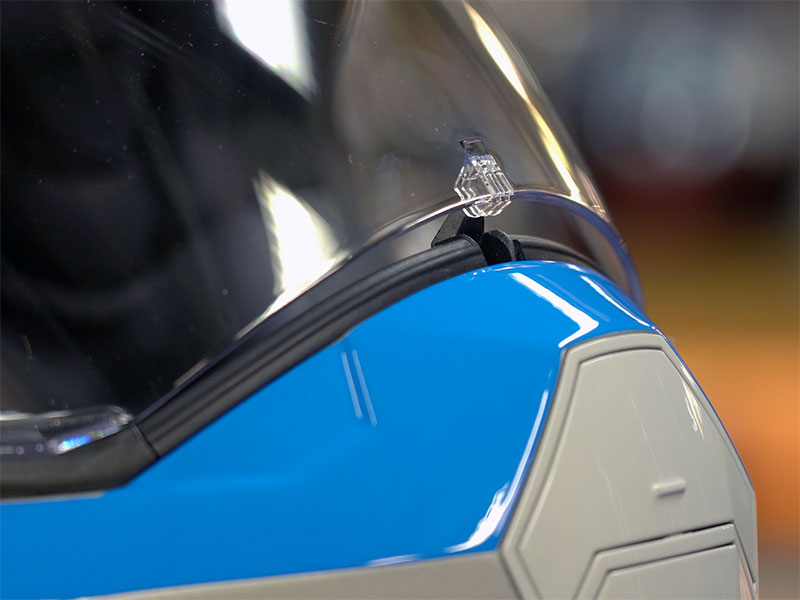
Klim talk about a ‘crack’ position on the X1; and yes there is one, although as with many 22-06 helmets the crack position only really comes about as a result of the visor resting on top of the now-mandatory, visor, locking mechanism.
In addition to the supposed ‘crack’ position, the main visor has three detente positions. And they would appear to be reasonably robust. I can’t see the wind slamming the visor shut in any of them. Well at least not at road-legal speeds!
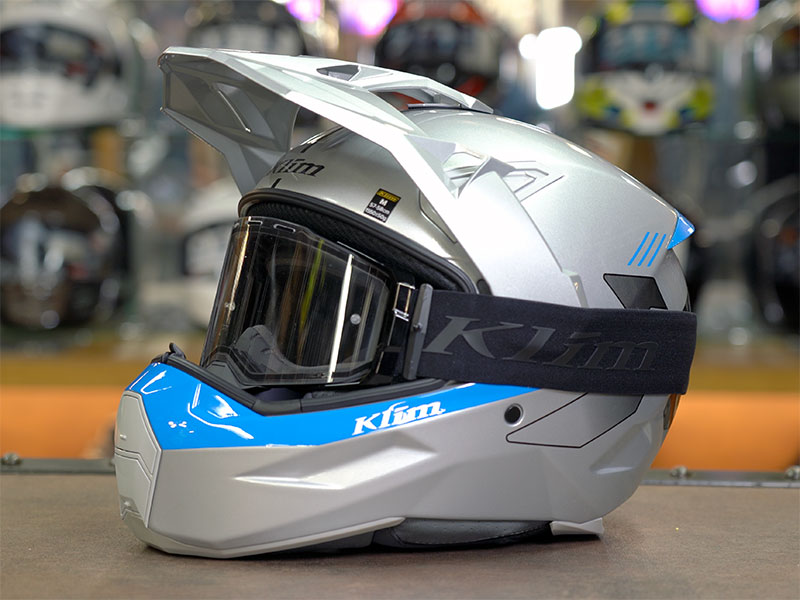
Obviously you can run the X1 without the peak, as we have suggested. You can also run it without the main visor, with or without the peak; and yes even the largest Klim goggles can be accommodated in the visor aperture. We tried it out, and you should be able to wear spectacles in the X1.
Klim is making a big noise about the venting on the X1. They talk about the importance of keeping the rider's head cool, as an act of ‘passive safety’. Now there's nobody more cogniscent of passive safety than we are. If you ride relaxed and comfortable, there's less chance of having an accident in the first place. So yes, good venting is important, but I can't help but feel that Klim is reaching a little on this by suggesting that this forms a central part of their thinking behind the X1. Not that we're suggesting that the venting on the X1 isn't good; it almost certainly is.
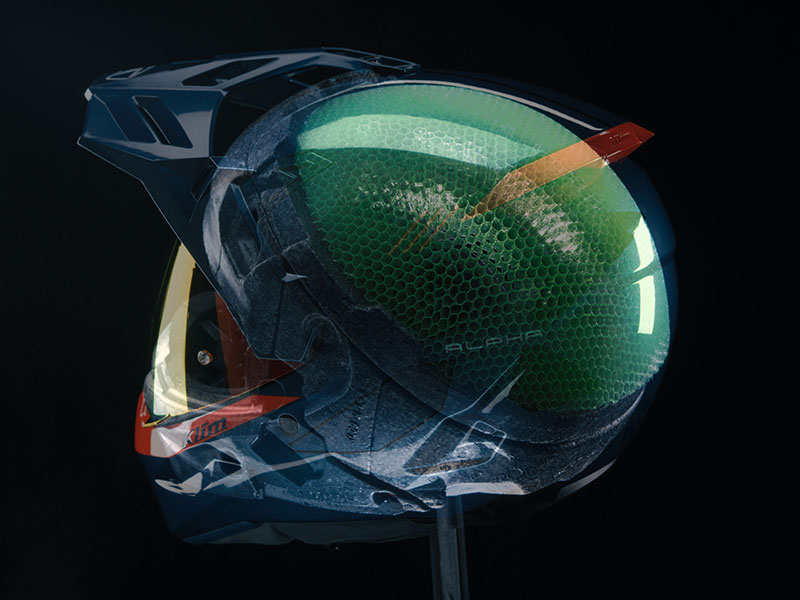
The venting and what Klim refers to as the helmet’s ‘heat management’ system is all tied up with the helmet's liner.
Now in the Krios Pro the lining was mostly Koroyd, which is made up of hollow, plastic-looking tubes. It's clever stuff. It's incredibly light, absorbs the energy of an impact very uniformly, and does so equally well in the hot and the cold.
But apparently one of the problems with the Koroyd in the Krios Pro was that, on a really hot day, it allowed too much transfer of heat from the shell to the head. I can't say that this was a problem we came across a lot in the U.K., but neither am I saying that it wasn't a valid consideration for some riders in some regions.
Well, in the X1, the Koroyd is sandwiched between two layers of expanded polystyrene (eps). And Klim has moved to this to prevent the aforesaid heat transfer from the shell.
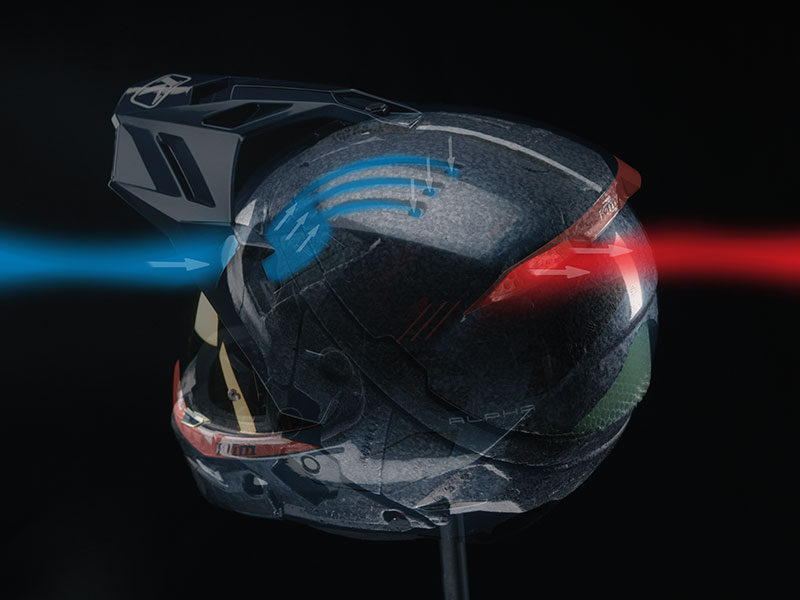
The upper portion of the eps is channelled to allow air that comes into the helmet via the side vents to move through the helmet to cool the head, and exit through the exhaust vents at the back of the helmet. The Koroyd tubes also allow heat coming off the head to escape into those same channels in the eps. Bottom line? When you’re hot, the X1 is undoubtedly going to be effective at helping you to stay cool headed. (See what I did there?).
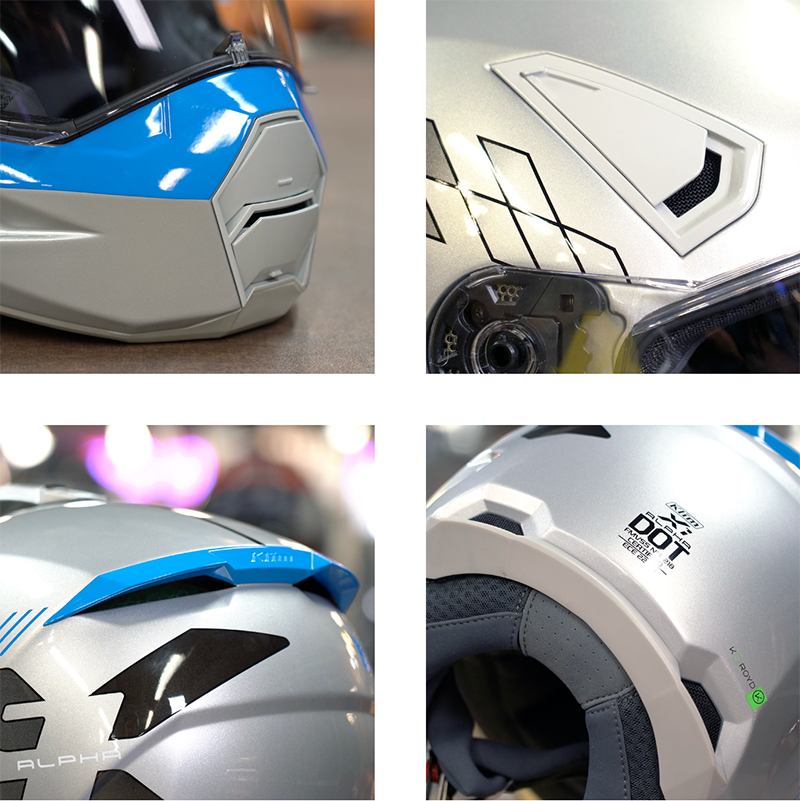
In terms of where the incoming air comes from, two vents on the chin direct air upwards into the helmet, although the upper vent directs air more specifically over the visor to prevent fogging. There are two more closable vents on the side of the shell that also direct air through the eps. Unusually, there is no vent top-centre on the X1. The hot air within the helmet can exit through two different sets of exhaust vents. Two are beneath the integrated aerofoil. Two are just above the neck roll.
Just a pointer. You can remove all the covers from all the vents to allow more air to enter the helmet. Just don’t come asking for replacements when you lose them, because you can bet your bottom dollar that Klim won’t be holding stock of them.
Another advantage to the new way in which the Koroyd is sandwiched between the two layers of eps. Is that it will also serve to better insulate noise; the noise that in the Krios was transmitted from the resonating carbon shell directly down through the Koroyd tubing to the rider's ears! And so whilst this new construction was created, according to Klim, to make the helmet cooler to wear, it will also make it somewhat quieter, we figure.
There’s something else we should point out about the X1’s ‘sandwiched’ head liner.
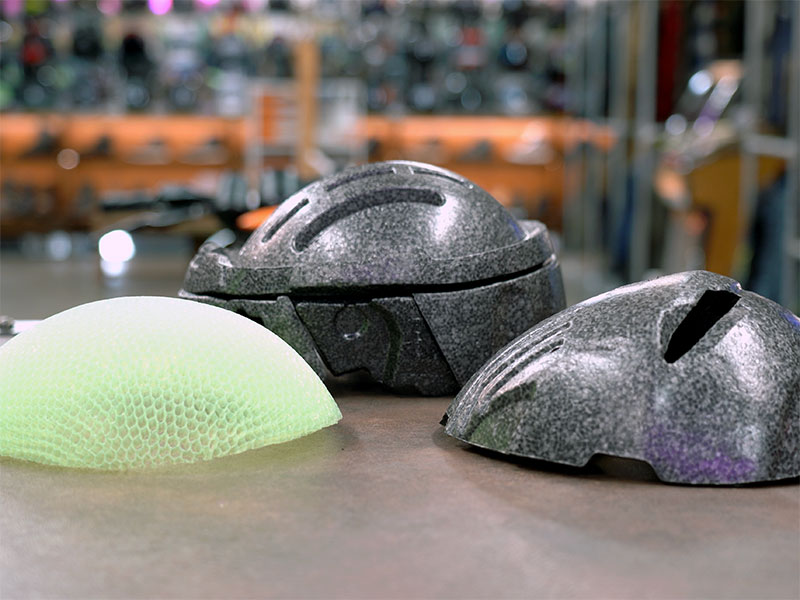
You will often have read about dual-density eps liners, without perhaps understanding their significance. Well their significance is easier to see with the X1 than it is with other helmets. The upper part, the top-slice so to speak, is very dense, and it is designed to absorb the energy of a heavy impact. The lower half of the sandwich, which sits below the Koroyd, is much softer, and is designed to better absorb the energy of a lower speed impact. And that’s important because if this part was as dense as the top half the eps wouldn’t absorb much of the force of the blow when, say, you fell off the bike in the car park.
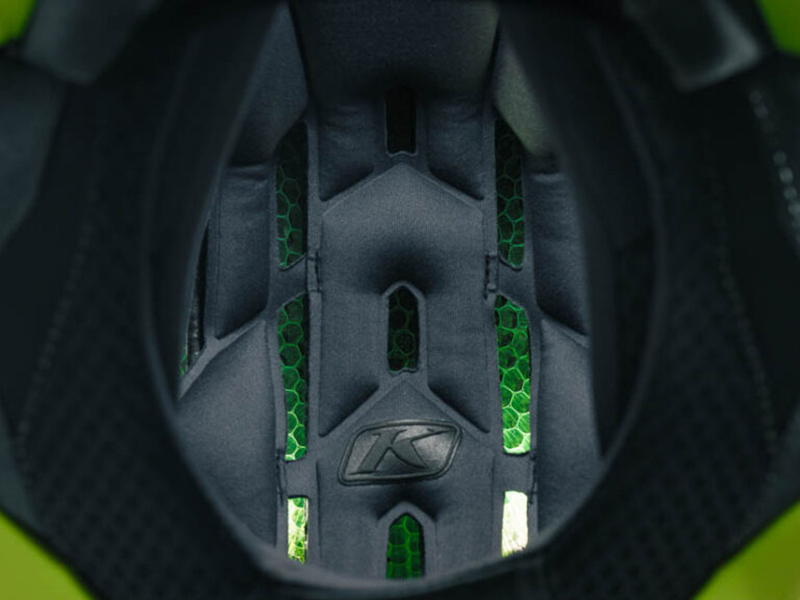
lim also talks about the much improved quality of the X1’s interior facings. And I would say that this is correct. All the facings feel soft and comfortable next to the skin. And where the material does not touch the skin you get some kind of mesh material that is clearly aimed at improving breathability. You also get some perforated suede on the underside to add a touch of sophistication.
One of our major criticisms on the Krios Pro was the lack of substance in its cheekpads; and indeed a couple of years ago we did write to Klim with a selection of cheekpads from the likes of Shoei and Arai to show them how they needed to up their game. And so we’re glad to report that the cheekpads on the X1 are a great improvement. What’s more, we are told that we will eventually be able to change these pads out for ones of different thicknesses. In fact, we could do that on the Krios Pro but it never seemed to make much difference because they could all be similarly compressed to almost nothing!
Klim talks about being able to change out the head liners, but really only as a replacement item. Only between XS and S, and between XXL and XXL are the headliners interchangeable.
There is talk of foam shims being provided to help pad out the crown liner to improve the fit. But without the ability of Shoei’s PFS system to tell us what’s going on between the eps and the rider’s head we just can’t see how this is going to work effectively.
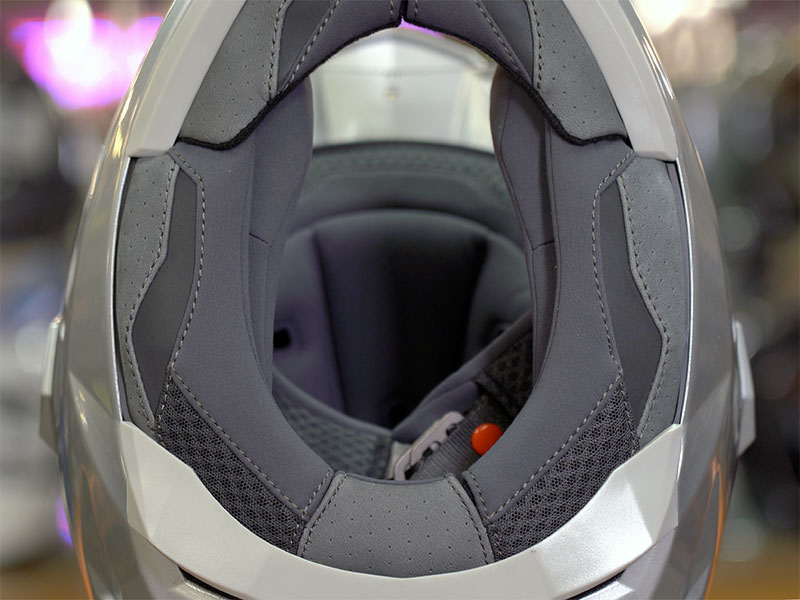
he X1 is equipped with a permanent chin curtain, and Klim has clearly made an attempt to create a tighter neck roll to reduce noise. We really like stretch banding that runs through the neck roll, and that should make the helmet easy to get over the crown despite the tighter neck. This all works well. But, as one might expect, the neck roll is not flip-helmet tight, so I’m not sure how effective it will be at keeping wind noise out. It’s certainly a step in the right direction, though. In the box, by the way, you also get a second, more solid, chin curtain that can be inserted at the front of the helmet.
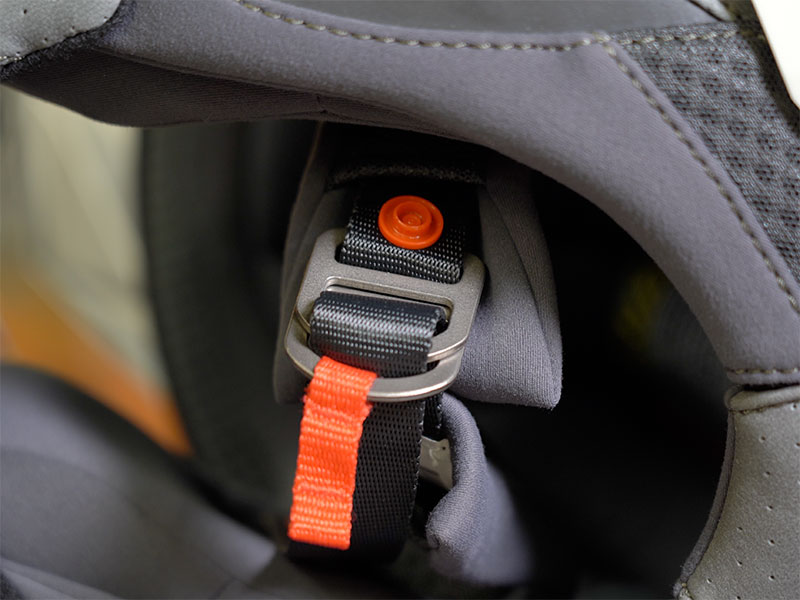
Not quite sure why, but for the X1 Klim has dropped the Fidlock strap fastening. We thought it was clever. But as ever in this market, something new and unknown is always going to unnerve those bikers who don’t like change. Not sure if that’s the reason Klim has gone back to the double-D ring system; but what can be said about the D-ring is that it’s tried and trusted. On the X1, the rings are made from titanium.
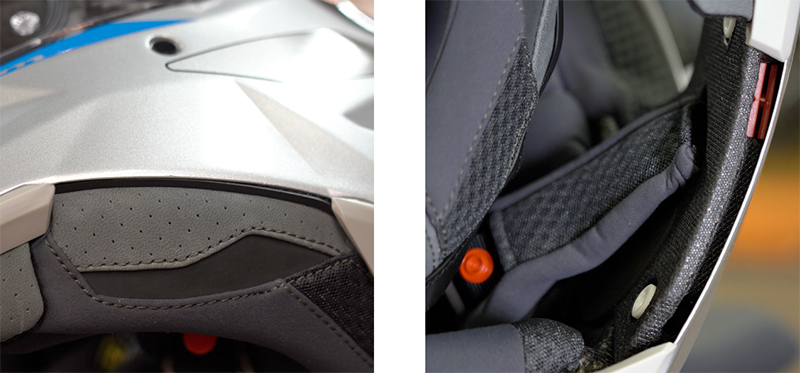
Lastly, even though there was a dedicated comms. system for the Krios, it was a bit of a waste of time because you couldn’t hear anyone or anything anyway. Well for the X1 there’s no specific unit. There’s a good amount of space to mount a unit on the side of the helmet, but most comms. systems have a slightly curved inner profile, and in this area the X1 is quite flat, so you may need some extra sticky pads. We watched one video review from an American retailer where the presenter explained how the thin, rolled, lower edge of the helmet would make it easy to use the clamping device many units come with. Well, I suspect he had never fitted a comms. to a helmet because a clamp simply won’t work on the X1. You’re gonna need the stickies! There are good recesses for even the largest earphones, by the way.
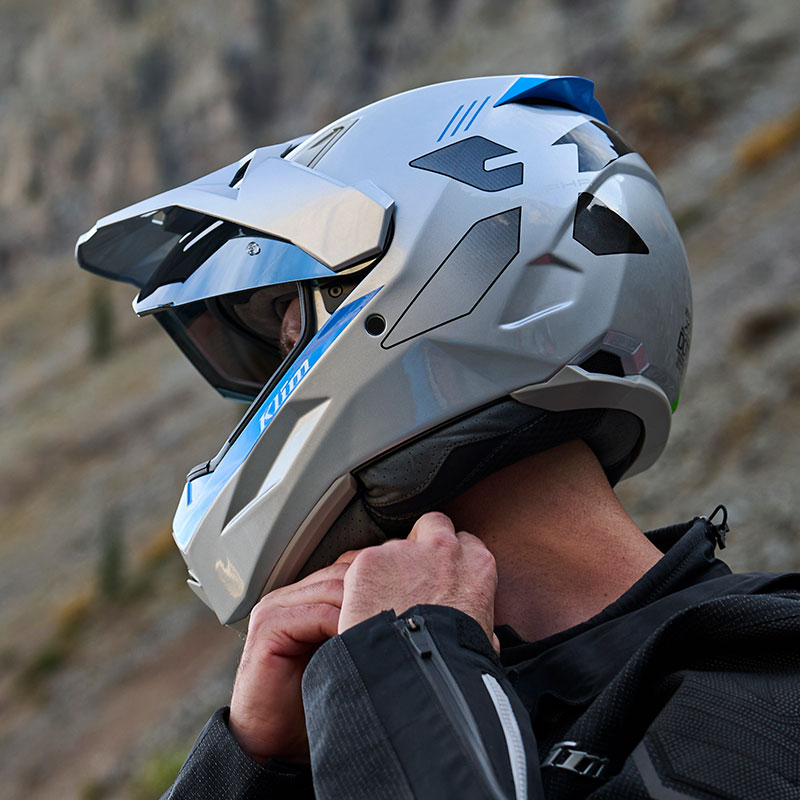
Our conclusions
If there were issues with the Krios; and in our view there were quite a few; then it would appear that the X1 has been designed to address most of them.
The X1 is in every way a European-style adventure helmet. You would happily wear it off-road, but over here you have to do lots of miles on the road to find the few that are off it. And for that kind of riding the X1 is the type of helmet you want. And although we don’t ultimately know how it’s going to go down with adventure bikers, we think all the vital signs are good. What is clear is that Klim has pulled out all the stops to help ensure that the X1 works for the kind of people who found the Krios Pro a bit extreme.
It’s still a lightweight helmet, it’s got a peak, it will undoubtedly be quieter than the Krios Pro, it’s going to fit better than the Krios Pro and it’s going to be much more comfortable. As far as we’re concerned, the X1 is a better adventure helmet than the Krios Pro in almost every respect.
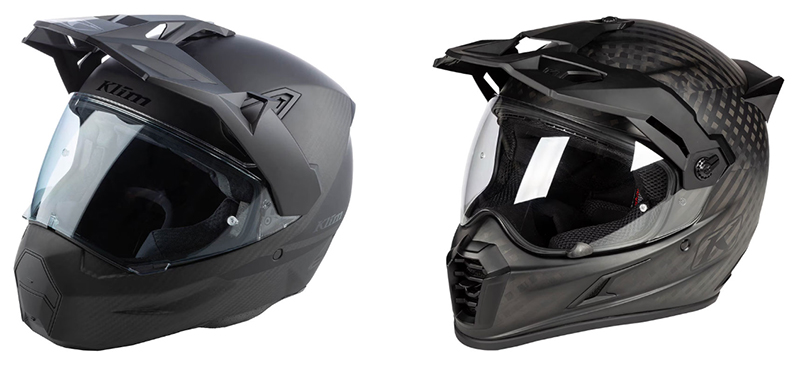
Someone we know in the business did express to us his view that the X1 is not as pretty as the Krios Pro. Now it may be that we get so focussed on functionality that such considerations pass us by, but honestly this hadn’t occurred to us. Does the X1 look less aggressively off-road? Well yes, but that’s part of the reason that it’s going to work so much better on it. Remember, of course, that it’s the extended chin piece of an off-road helmet that often makes them so noisy.
Not that we really agree with concerns about the X1’s aesthetics. We don’t see any issues. This is really a road helmet with a peak, and given this the helmet looks exactly how we would expect it to.
The bottom line is that we have taken to the X1 in the way we never did the Krios Pro.
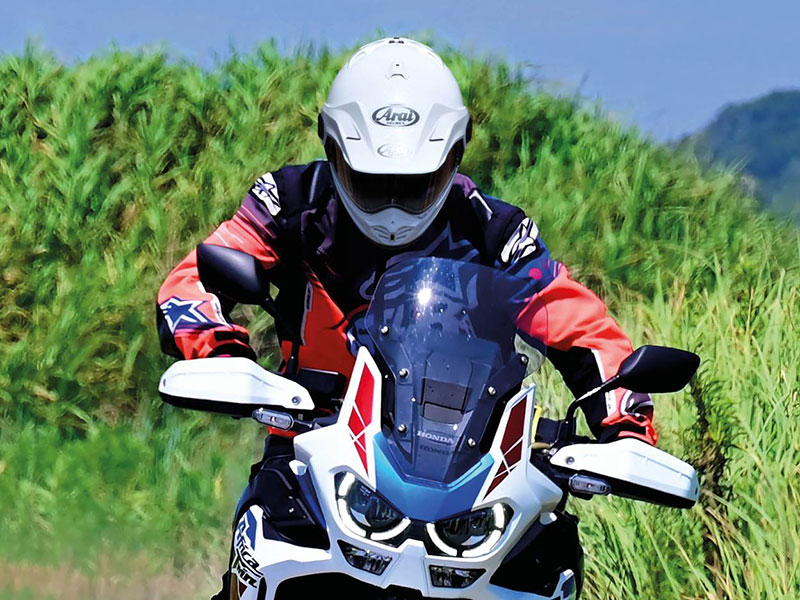
We are, we have to admit, still a little taken aback by its price. It’s more expensive than the Arai Tour-X5. It’s more expensive than a Shoei Neotec 3. And for us it’s a price that seems hard to justify from a brand that doesn’t specialise in helmets. And feature laden as it is, bits of the X1 still feel a bit on the flimsy side. It is no Arai, no Shoei, from a quality of construction perspective.
But I suspect that little of this will bother your average Klim aficionado. They will see that the X1 is not that much more expensive than the Krios Pro; yet in almost every way it’s a much better helmet. And so, for these folk, I cannot see the price being a major obstacle.
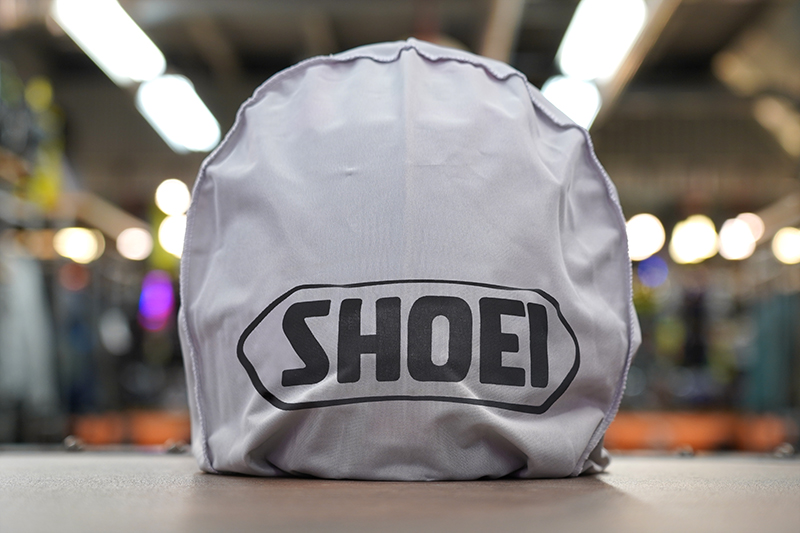
The one thing that will take some time to resolve is availability. Now when Shoei brings out a new helmet, nearly all the colourways and all the sizes will be available from the off. But with Klim it could take a bit of time for all the SKUs to become available; and even then, when they do become available, Klim won’t hold much stock. It could take much longer for the cheekpads to make their way into dealerships.
When it comes to supplying helmets to the market, Klim still has a lot to learn, but Rome wasn’t built in a day, I suppose!
If you do want an X1, though, you should come and see us, because if it’s not the helmet for you £700 constitutes an expensive mistake in anybody’s book.
You can buy the Klim X1 Alpha helmet with free next day UK delivery online, or visit our store in Guildford to try one on.
Share this story
































































